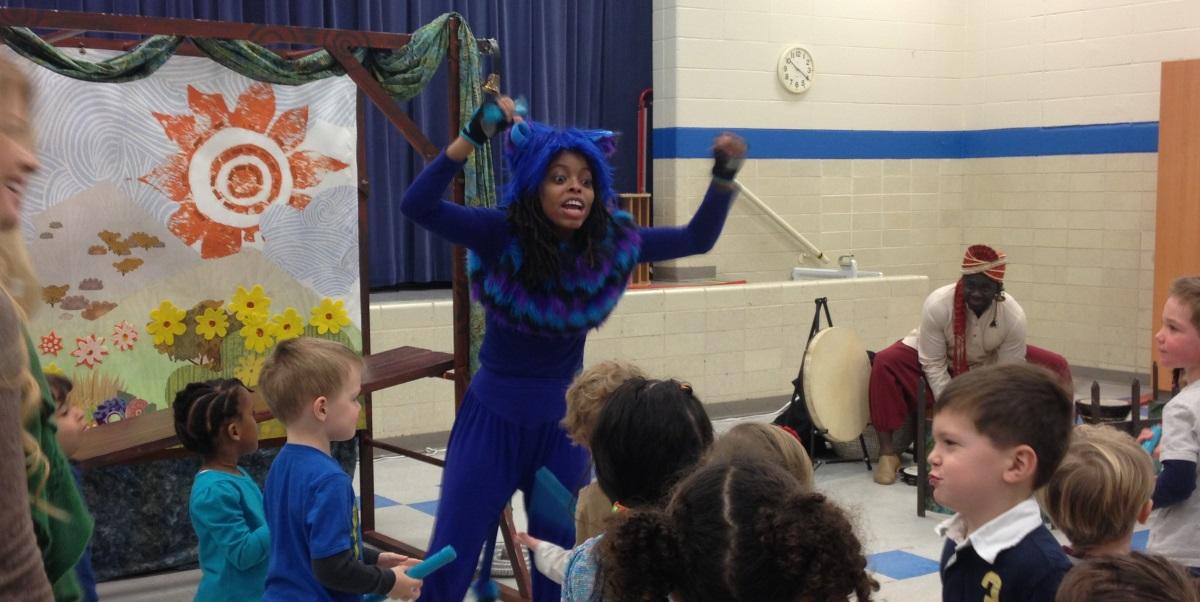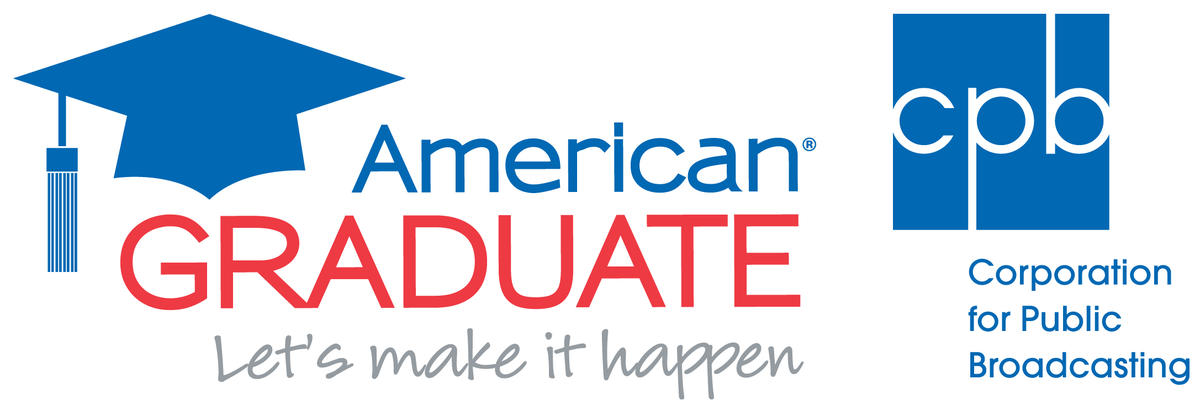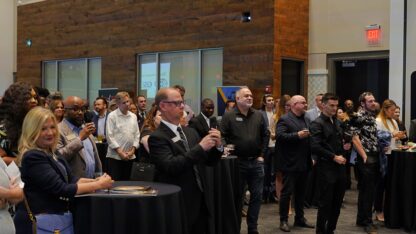Alliance Theatre Delivers ‘Bucket Of Blessings’ To Schools

Can theater help young school children learn?
The men and women behind the Alliance Theatre certainly think so. In 2011, they began their Theatre for the Very Young program, which not only brings children into the theater, but brings theater — and all of its benefits — to them.
Myke Johns followed them to a performance at DeKalb County’s Coralwood School to find, around 8:15 a.m., an elephant in the school’s small auditorium space… along with a monkey and a peacock and a musical narrator.
This is the cast of “A Bucket of Blessings,” the current production being put on by the Alliance’s Theatre for the Very Young program. The cast entertains a group of pre-school aged children sitting, listening … and occasionally jumping into the story.
Chris Moses, the Dan Reardon Director of Education and associate artistic director at the Alliance Theatre, explains that there are a few ingredients a show needs in order to engage an audience that young.
“You need characters that are going to resonate with young children,” Moses says. “And here we had a monkey, an elephant, a peacock … but then a story that rings true but also is told with beauty and simplicity.”
“A Bucket of Blessings” is based on an Indian folktale.
In the story, it hasn’t rained in weeks. A thirsty monkey, along with his friend Elephant, seeks the help of a peacock high up on a mountain who says she can make it rain if Monkey can bring her a bucket full of water.
Monkey and Elephant find some water in a cave, but the water spills out on his way back up the mountain and flowers bloom from the drops of water. The Peacock eventually accepts the gift of the flowers and summons the rain.
It’s a story about perseverance and making the best of what you have; at the same time, it’s engaging enough to get a group of three-year-olds to sit mostly still for about thirty five minutes.
“They have brought culture in a way that the children can understand,” says Coralwood principle Melanie Castell. “They bring it to their level, they make it simple, they teach important messages, and the children get it.”
Coralwood is the only school of its kind in the DeKalb County School System. It’s considered an early childhood inclusion center. Their students range from three to five years old — pre-K up to Kindergarten.
“Inclusion school” means half of the student population are children with special needs, and the other half are typically developing children.
These children are taught side-by-side with both special education and general education teachers in the classroom. Right now, they have about 240 students, so classroom sizes can stay small.
“Miracles happen here,” Castell gushes, “it’s just an incredible school.”
So when Coralwood invites Theatre for the Very Young to come perform, it’s not just a break for the students and teachers. Castell says that they pre-teach the story, so if the show is based on a book, as “A Bucket of Blessings” is, they’ll bring that into the classroom. In the past, they have also had the Alliance’s artist-in-residence come to the school to work with their pre-schoolers to help the teachers incorporate drama into their everyday teaching.
So how can theater help in the classroom?
“When we’re talking about very young children,” Castell explains, “they learn through play. And theater performances are a step up from play. It’s play with purpose.”
The Alliance looked into the relationship between theater and the classroom in two consecutive Department of Education studies done in collaboration with Fulton County Schools and Georgia State University. Over a three year period, they tested the effects of theater in the classroom in high-concentration poverty Title 1 schools, and another study around English Language Learners.
For each of these studies, kindergarten teachers were provided professional learning opportunities in theater. They then infused this into language arts lessons five months out of the school year, and they found that students began acquiring language at a faster pace than the control groups.
“Their vocabulary increased,” Chris Moses says. “Their ability to tell stories and write stories increased. And in both cases we found what I think we inherently knew, that theater can awaken creativity, but also just keep students engaged. So those students, because of this higher engagement in the classroom were out-performing the control group.”
The studies conclude that by emphasizing the links between emotion, meaning and words, theater builds on the foundation of pretend play — that “play with purpose” that Melanie was talking about — and enhances communication skills as well as mathematics. Special needs students showed an even greater benefit from the project over time.
These are all great things for the classroom, but Chris Moses zeroes in on that other component mentioned in the study: emotion.
“I think theater, at its best, is allowing people a chance to look at life from a completely different set of circumstances,” he says, “which gives you the skill to develop friends who may at first seem different from you. I think that is an essential skill in our world right now.”
So when the Monkey in “A Bucket of Blessings” helps his friend the Elephant squeeze into a cave, or turns a game of jump rope into a tug of war because Elephant is naturally better at pulling than jumping, kids who probably haven’t yet learned what the word “empathy” is or means are seeing it played out in front of them.
Chris Moses recalls a story that’s been burned into his brain from one of the Alliance’s first visits to Coralwood.
“We did an adaptation of the Tortoise and the Hare,” he says, “and there’s a moment in the story where the Hare gets caught up in a spider web. And I saw this young boy here at Coralwood who had special needs, was the first one to get up; he was so motivated and moved by the fact that this Hare was stuck that he was moved by empathy to go out and help her. And he ended up leading the rest of the class. They followed him in that moment, because he was so moved.”
“And from that moment on,” Moses says, “I knew that this is work that matters, and this is a school I am committed to doing this work with.”
In doing this work, Theatre for the Very Young sets its sights on leaving an impression on its audience before it becomes not so “very young” — perhaps making a play about a monkey looking for water the most important piece of theater its audience will ever see.
This story is part of American Graduate, Let’s Make it Happen, a public media initiative made possible by the Corporation for Public Broadcasting.






